S.Africa's lions prosper with careful watch and fenceless parks
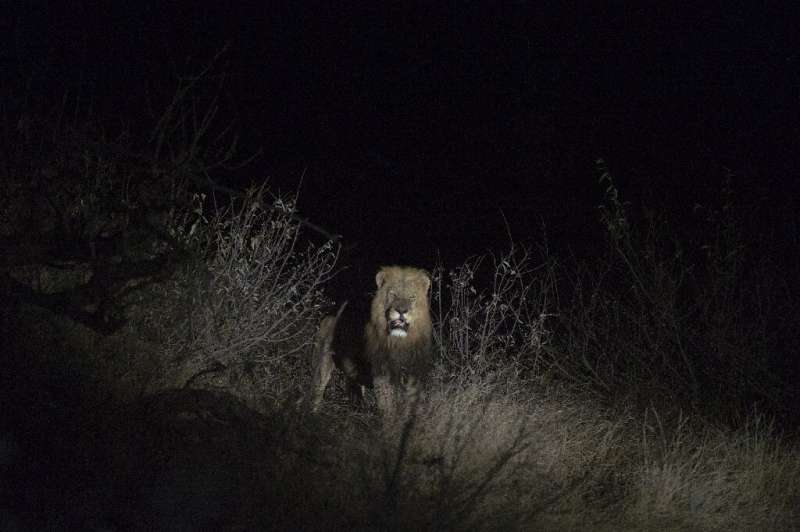
At sunset, a buffalo calf's distressed grunts reverberate through the bush.
But it's a trick.
The grunts are blaring from a loudspeaker, designed to lure lions to a tree and let a South African wildlife reserve carry out a census of its apex predator.
As an added enticement, the carcasses of two impalas are affixed to a tree. The scent promises a fresh meal.
In the headlights of a 4x4, armed rangers with night binoculars and torches watch over the scene.
"We know our lions, but with this process, we verify them," says Ian Nowak, head warden at the Balule Nature Reserve.
A wildlife researcher next to him listens intently, her ears tuned to clues from the nocturnal sounds.
That's how she knows a rumbling is from elephants grazing in the tall grass. And that's how she knows when to raise her camera to photograph lions, looking for distinctive scars or peculiar ears—anything that identifies them for the count.
This job requires patience. The team once spotted 23 lions ripping into the bait.
"They growl and they fight. Then they lie down and eat," Nowak whispers. "It can be quite a frenzy on the bait. They smack each other and then settle down."
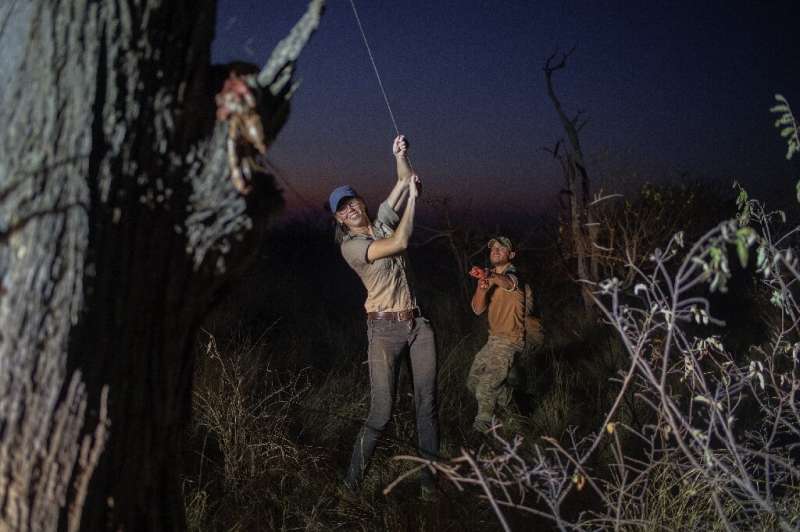
Don't fence them in
At 55,000 hectares (136,000 acres), Balule is huge—yet it connects with an even bigger ecosystem that, all told, is almost the size of Belgium.
Balule and other nearby game farms have transitioned into nature reserves, joining up with the Kruger National Park to create a vast territory without internal fences, covering 2.5 million hectares, that extends to Mozambique.
To create such enormous space for wildlife is a rare success story these days.
Conservationists meeting in Marseille, southern France, are deeply worried for Africa's "big cats", facing loss of habitat and human encroachment as well as poaching.
Balule is so big that its census-takers have to criss-cross the terrain to make the count as thorough as possible.
"Sometimes they've eaten. If they're full, they don't come," Nowak said. "Especially the males, they're lazy as hell."
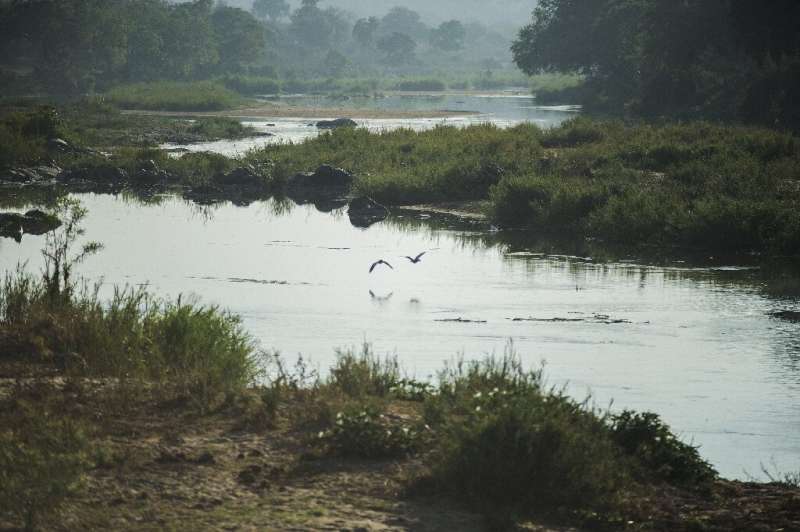
Twenty years ago, Balule was mostly farmland and lions were few.
Last year, the census found 156 of the lordly beasts.
"Lions are doing incredibly well, mainly because there's a large enough space to operate," Nowak says.
Overall, the news is good for lions in South Africa, thanks to government conservation efforts—helped by the inducement of tourists who are willing pay to see the animals. Private investors have also stepped in.
A years-long drought has also been a boost. Antelopes and buffalo did not have enough to eat, making them easier prey for large carnivores.
'Lions don't share'
The loudspeaker rumbles again with the recording of the injured buffalo calf. This time, a small jackal appears, hoping for a nibble. At the slightest sound, it dashes away.
The wildlife researcher detects another movement in her thermal binoculars. The headlights flash back on, illuminating the majestic mane of a lion approaching stealthily, careful but calm.
-
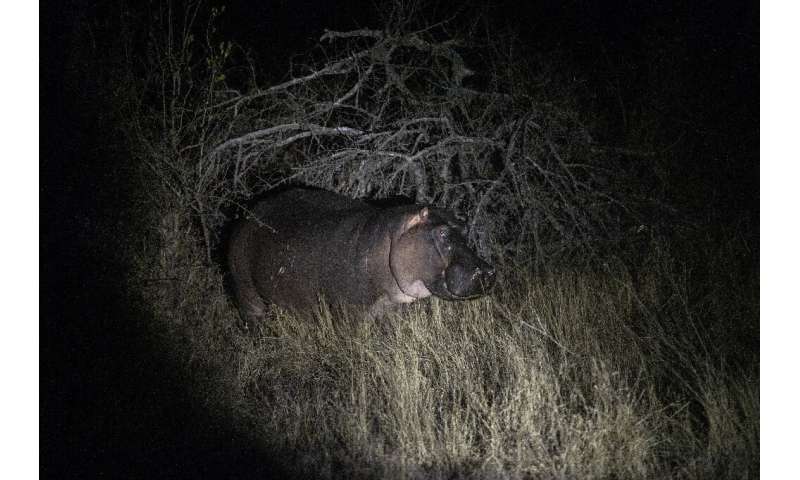
Lions are not the only animals thriving in the Balule reserve. -
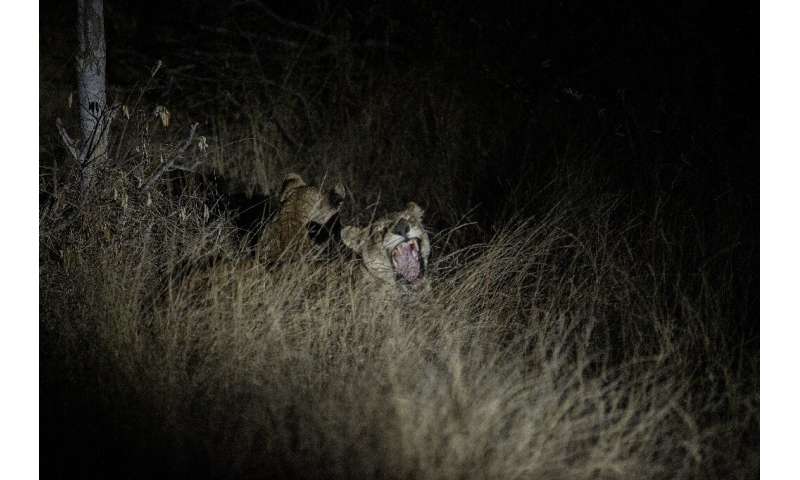
Last year's census found 156 lions in Balule, an area that was mostly farmland 20 years ago.
"He's initially cautious," says Nick Leuenberger, one of the regional wardens. "He doesn't know if he'll be walking in on another pride."
"Lions defend their food, they don't share," he adds.
"Here the lion tolerates the jackal. He knows he's not a major threat to his food source."
Suddenly, the lion leaps up to one of the suspended impalas, biting into its belly. After his meal, he lies at the foot of the tree.
Now the team can move on. No other animals will dare approach.
The next night, seven hyenas take turns snipping at the fresh impala, without a lion in sight.
But on the way back, the 4x4 slams the brakes. To the left, a hippo roars furiously, its mouth wide open.
To the right, seven lionesses raise their heads above the grassline. A magical sight, but no danger to the hippo. Nowak says it would take at least twice as many lions to threaten the hippo.
The tension eases. A lion emerges from the brush and walks along the trail. A lioness joins him, and the 4x4 follows them slowly until they disappear into the night.
© 2021 AFP



















